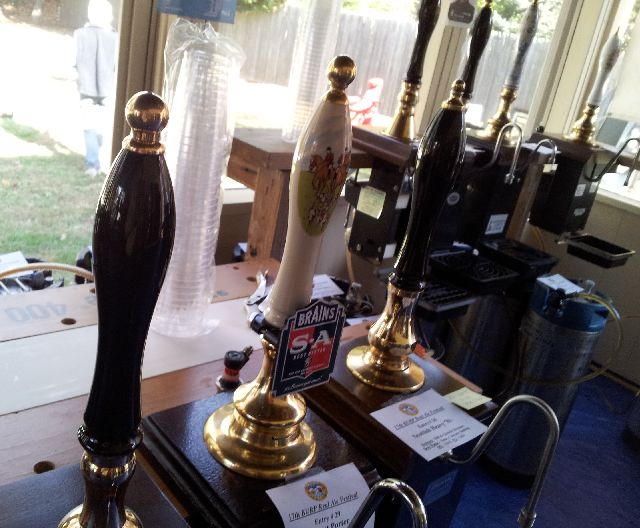Real Ale Drinking

Last weekend, I not only repeatedly relayed the story of how I become interested in brewing, I also had the opportunity to celebrate it at a “real ale” homebrew club meeting hosted by Brewer’s United for Real Potables (BURP).
Years ago I lived in the UK where I discovered cask-conditioned beers (referred to as “real ale”). This traditional brewing style challenged what I thought I knew about beer at the time. Clearly, I needed to better understand the whole brewing process. Within a year, I was brewing my own beer.
Quick tutorial on real ale: Real ale is beer allowed to ferment in the vessel from which it’s served, and it naturally carbonates itself in the process. It should be stored at cellar temperature and allowed to settle before serving (agitating it will shake up the yeast and other ingredients, which will affect the appearance and flavor of the beer). Because it’s unfiltered and unpasteurized, it’s a living product. Once open, it needs to be drunk quickly before it becomes oxidized. You can learn more through the Campaign for Real Ale (CAMRA), a UK organization committed to preserving this style of brewing.
Oddly enough, even though I’ve been brewing for nearly seven years, I still haven’t explored brewing real ale (beyond an apparent stubbornness to continue bottle conditioning, I guess). Real ales are also still rare in the US, so I haven’t been able to expand my knowledge much beyond what I learned while drinkin…er, living abroad. When I was invited to not only attend BURP’s real ale meeting but also to help steward the preceding competition, I eagerly agreed. Over two days, I sampled and assessed most of the 48 ales submitted and found the whole experience very educational.
What I learned:
- I gained a better understanding of the characteristics of beers that are cask conditioned and served through pins (small barrel that relies on gravity to pour) and beer engines (a manual hand pump used to pull beer from the keg) versus beers that are forced carbonated. It was a unique opportunity to compare them side by side.
- Although I knew that the flavors and quality of cask-conditioned beers will alter over time, it was really informative to be able to taste it. Even between Friday night and Saturday afternoon, I sampled beers with carbonation changes (a couple becoming more carbonated overnight), evolving characteristics (for example, more prominent diacetyl) or flavors that just settled.
- As a steward for the judges, I was also part of the “cellar team,” although those with more experience than I actually managed the kegs, beer engines and pins. However, I began to learn about storing and treating these beers and related equipment.
The whole event has inspired me want to revisit my “roots”, brew more traditionally British recipes, and experiment with cask-conditioning. Any requests?